RECENT ARTICLES

Study Finds Rat Poison in Dead Eagles From Across the U.S.
In the United States, the eagle is a powerful national symbol, and even though their populations are now increasing following the ban of DDT, they’re afforded protections . But a new study suggests that Americans trying to eradicate rodents with poison could be negatively impacting eagles across the country, reports Ian Morse for .The study, published last month in the journal , tested 116 bald eagles and 17 golden eagles collected between 2014 and 2018 for the presence of common rat poisons known as anticoagulant rodenticides. Researchers found rat poison in 82 percent of the eagles they...…In the United States, the eagle is a powerful national symbol, and even though their populations are now increasing following the ban of DDT, they’re afforded protections . But a new study suggests that Americans trying to eradicate rodents with poison could be negatively impacting eagles across the country, reports Ian Morse for .The study, published last month in the journal , tested 116 bald eagles and 17 golden eagles collected between 2014 and 2018 for the presence of common rat poisons known as anticoagulant rodenticides. Researchers found rat poison in 82 percent of the eagles they...WW…
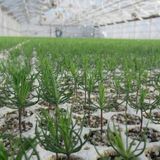
To Fight Climate Change With Trees, America Needs More Seedlings
Many government commitments to fight climate change hinge on in hopes that the plants will remove carbon dioxide from the atmosphere and store it in their trunks. have the that could be a climate change panacea, but a new study suggests there may not even be enough seeds to reach the lofty reforestation goals of initiatives such as the World Economic Forum’s .In the United States, the "" proposed planting 24 billion trees over the next 30 years. A 2020 from the World Resources Institute stated that there was ample space to achieve 60 billion new trees by 2040, if all suitable land across...…Many government commitments to fight climate change hinge on in hopes that the plants will remove carbon dioxide from the atmosphere and store it in their trunks. have the that could be a climate change panacea, but a new study suggests there may not even be enough seeds to reach the lofty reforestation goals of initiatives such as the World Economic Forum’s .In the United States, the "" proposed planting 24 billion trees over the next 30 years. A 2020 from the World Resources Institute stated that there was ample space to achieve 60 billion new trees by 2040, if all suitable land across...WW…
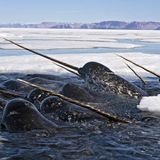
Study of Narwhal Tusks Reveals a Swiftly Changing Arctic
Male narwhals grow spiraling tusks throughout their lives that can reach lengths of up to ten feet. Now, analysis of these tusks reveals narwhals in the Arctic are altering their diets as climate change reduces the extent of sea ice. Warming and fossil fuel pollution may also be contributing to a large increase in concentrations of the toxic heavy metal mercury accumulating in the whales’ bodies, reports Molly Taft for .The research, published last month in the journal , looked at the chemical composition of ten tusks from whales killed by Inuit subsistence hunters off the coast of...…Male narwhals grow spiraling tusks throughout their lives that can reach lengths of up to ten feet. Now, analysis of these tusks reveals narwhals in the Arctic are altering their diets as climate change reduces the extent of sea ice. Warming and fossil fuel pollution may also be contributing to a large increase in concentrations of the toxic heavy metal mercury accumulating in the whales’ bodies, reports Molly Taft for .The research, published last month in the journal , looked at the chemical composition of ten tusks from whales killed by Inuit subsistence hunters off the coast of...WW…
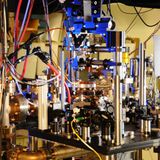
New Atomic Clocks May Someday Redefine the Length of a Second
New experiments bring researchers one step closer to redefining the length of the second, reports Emily Conover for .For decades, atomic clocks have been the gold standard when it comes to measuring the passage of time. When atomic clocks first appeared in the 1960s, they defined the second based on the properties of cesium atoms, which absorb and emit light at a reliable frequency.These cesium-based atomic clocks “tick” about nine billion times per second, and they’re used to keep our modern, connected world in sync, report Karen Zamora, Christopher Intagliata and Farah Eltohamy for...…New experiments bring researchers one step closer to redefining the length of the second, reports Emily Conover for .For decades, atomic clocks have been the gold standard when it comes to measuring the passage of time. When atomic clocks first appeared in the 1960s, they defined the second based on the properties of cesium atoms, which absorb and emit light at a reliable frequency.These cesium-based atomic clocks “tick” about nine billion times per second, and they’re used to keep our modern, connected world in sync, report Karen Zamora, Christopher Intagliata and Farah Eltohamy for...WW…
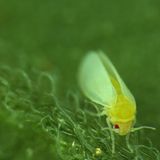
This Insect Has Plant DNA in Its Genome
A small, aphid-like insect called a whitefly has plant DNA lurking in its genome—and it’s among the first known instances of gene transfer from plant to insect, reports Heidi Ledford for .The gene in question is no slouch either, as it appears to enable the insects to feed on plants loaded with natural toxins, according to the new study published last week in the journal . This fateful transference of genetic material occurred at least 35 million years ago and looks to be part of the genetic toolkit that make whiteflies such a formidable agricultural pest, reports Jonathan Lambert for .“Ten...…A small, aphid-like insect called a whitefly has plant DNA lurking in its genome—and it’s among the first known instances of gene transfer from plant to insect, reports Heidi Ledford for .The gene in question is no slouch either, as it appears to enable the insects to feed on plants loaded with natural toxins, according to the new study published last week in the journal . This fateful transference of genetic material occurred at least 35 million years ago and looks to be part of the genetic toolkit that make whiteflies such a formidable agricultural pest, reports Jonathan Lambert for .“Ten...WW…

The Amazon Rainforest Now Emits More Greenhouse Gases Than It Absorbs
The Amazon rainforest may now emit more greenhouse gases than the famously lush ecosystem absorbs, according to new research.Long considered to be a bulwark against climate change because of its capacity to absorb carbon dioxide, a new study suggests rising temperatures, increasing drought and have likely overwhelmed the Amazon’s ability to absorb more greenhouse gases than it emits, reports Craig Welch for .The sobering findings appear in a new study published earlier this month in the journal that calculates, for the first time, the net emissions of greenhouse gases from both human and...…The Amazon rainforest may now emit more greenhouse gases than the famously lush ecosystem absorbs, according to new research.Long considered to be a bulwark against climate change because of its capacity to absorb carbon dioxide, a new study suggests rising temperatures, increasing drought and have likely overwhelmed the Amazon’s ability to absorb more greenhouse gases than it emits, reports Craig Welch for .The sobering findings appear in a new study published earlier this month in the journal that calculates, for the first time, the net emissions of greenhouse gases from both human and...WW…
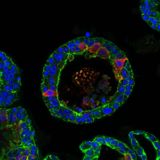
Scientists Make Tiny Lab-Grown Tear Glands Cry
Scientists experimenting with clusters of lab-grown stem cells designed to mimic human tear glands successfully made them cry, reports Heidi Ledford for . These cell clusters, or organoids, might one day be able to be transplanted into the eyes of real people, where they could remedy dry eye diseases such as the autoimmune condition known as Sjögren’s syndrome.Though those of us fortunate enough to have working tear glands don’t spend much time thinking about them, the liquid they produce provides essential lubrication to the eye and contains proteins and other compounds that stave off...…Scientists experimenting with clusters of lab-grown stem cells designed to mimic human tear glands successfully made them cry, reports Heidi Ledford for . These cell clusters, or organoids, might one day be able to be transplanted into the eyes of real people, where they could remedy dry eye diseases such as the autoimmune condition known as Sjögren’s syndrome.Though those of us fortunate enough to have working tear glands don’t spend much time thinking about them, the liquid they produce provides essential lubrication to the eye and contains proteins and other compounds that stave off...WW…
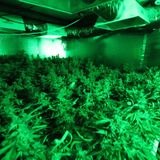
Growing an Ounce of Pot Indoors Can Emit as Much Carbon as Burning a Full Tank of Gas
As more and more states legalize cannabis for medical and recreational use, demand for the intoxicating plant is increasing and of that commercial demand is being satisfied via fully indoor grow operations. A new study suggests that in certain parts of the country, these indoor grow houses are responsible for significant emissions of planet-warming greenhouse gases, raising questions about the environmental toll of the expanding legal cannabis industry, reports Krista Charles for the .The researchers behind the study, published this week in the journal , estimated that the emissions...…As more and more states legalize cannabis for medical and recreational use, demand for the intoxicating plant is increasing and of that commercial demand is being satisfied via fully indoor grow operations. A new study suggests that in certain parts of the country, these indoor grow houses are responsible for significant emissions of planet-warming greenhouse gases, raising questions about the environmental toll of the expanding legal cannabis industry, reports Krista Charles for the .The researchers behind the study, published this week in the journal , estimated that the emissions...WW…
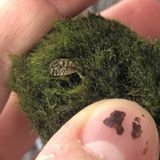
Officials Say Invasive Zebra Mussels Are Hiding in Aquarium Decor Sold Across U.S.
Federal officials in the United States warn that invasive have been discovered lurking in shipments of moss balls sold as aquarium accessories in pet shops across the country, according to a statement from the (USGS). The statement says the invasive freshwater bivalves, which are native to Eurasia, have been found in pet shops in at least 21 states.The Conservation Officer Service in British Columbia, Canada, has also reported finding zebra mussels in pet shops after conducting searches at some 600 locations, reports David Carrigg of the .Zebra mussels are tiny, about the size of a...…Federal officials in the United States warn that invasive have been discovered lurking in shipments of moss balls sold as aquarium accessories in pet shops across the country, according to a statement from the (USGS). The statement says the invasive freshwater bivalves, which are native to Eurasia, have been found in pet shops in at least 21 states.The Conservation Officer Service in British Columbia, Canada, has also reported finding zebra mussels in pet shops after conducting searches at some 600 locations, reports David Carrigg of the .Zebra mussels are tiny, about the size of a...WW…
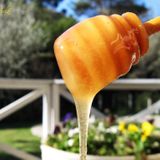
Fallout From Cold War Nuclear Testing Detected in U.S. Honey
Scientists testing batches of American honey found fallout from nuclear tests conducted in the 1950s and 1960s, reports Nikk Ogasa for .Researchers detected traces of the radioactive isotope cesium-137 in 68 of 122 samples of fresh honey produced by bees from across the eastern United States, they report in a paper published in March in the journal . The concentrations of cesium-137 found in some honeys were around 100 times higher than those seen in other foods.The researchers stressed that the levels of this radioactive isotope detected in U.S. honey are well below what is considered a...…Scientists testing batches of American honey found fallout from nuclear tests conducted in the 1950s and 1960s, reports Nikk Ogasa for .Researchers detected traces of the radioactive isotope cesium-137 in 68 of 122 samples of fresh honey produced by bees from across the eastern United States, they report in a paper published in March in the journal . The concentrations of cesium-137 found in some honeys were around 100 times higher than those seen in other foods.The researchers stressed that the levels of this radioactive isotope detected in U.S. honey are well below what is considered a...WW…